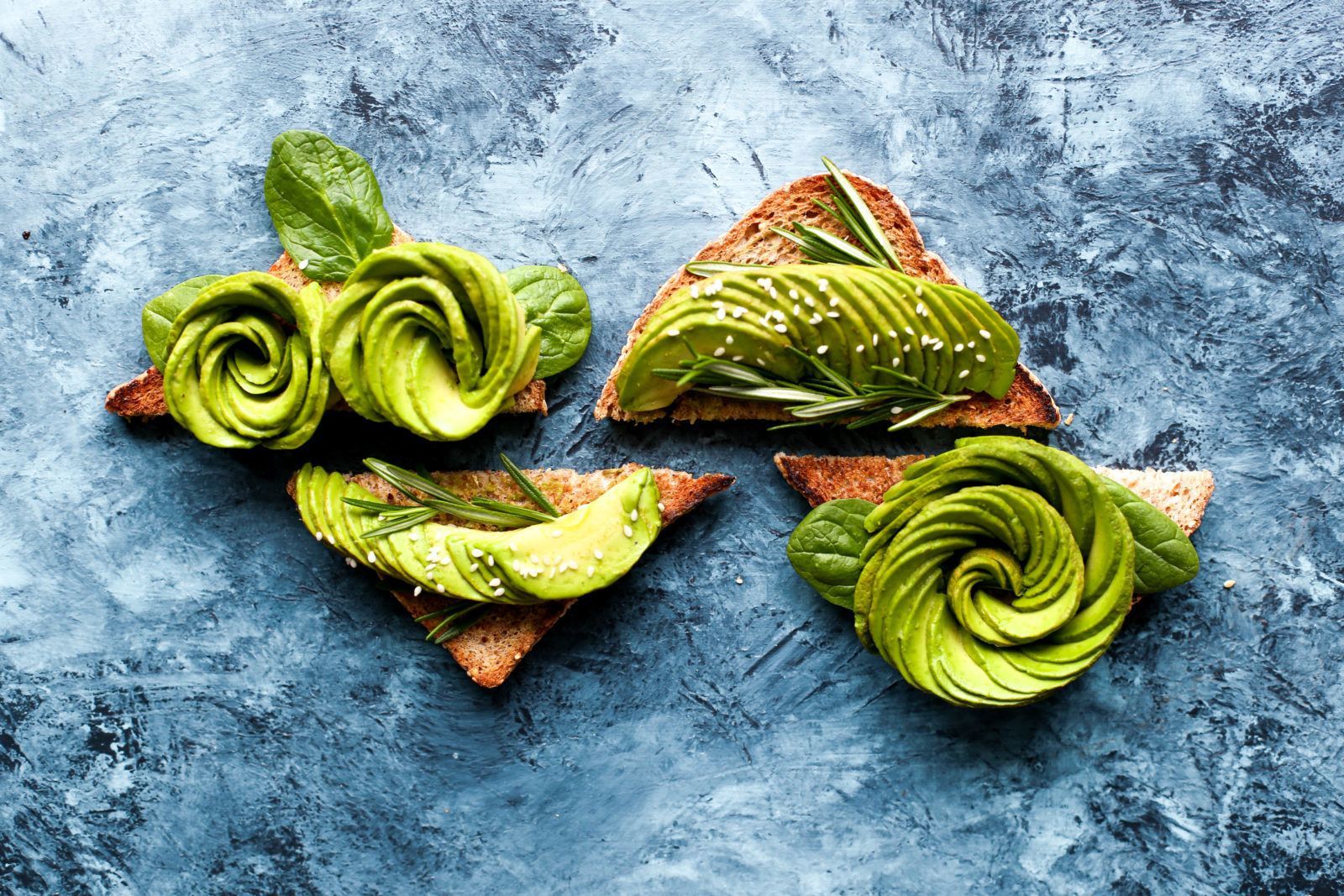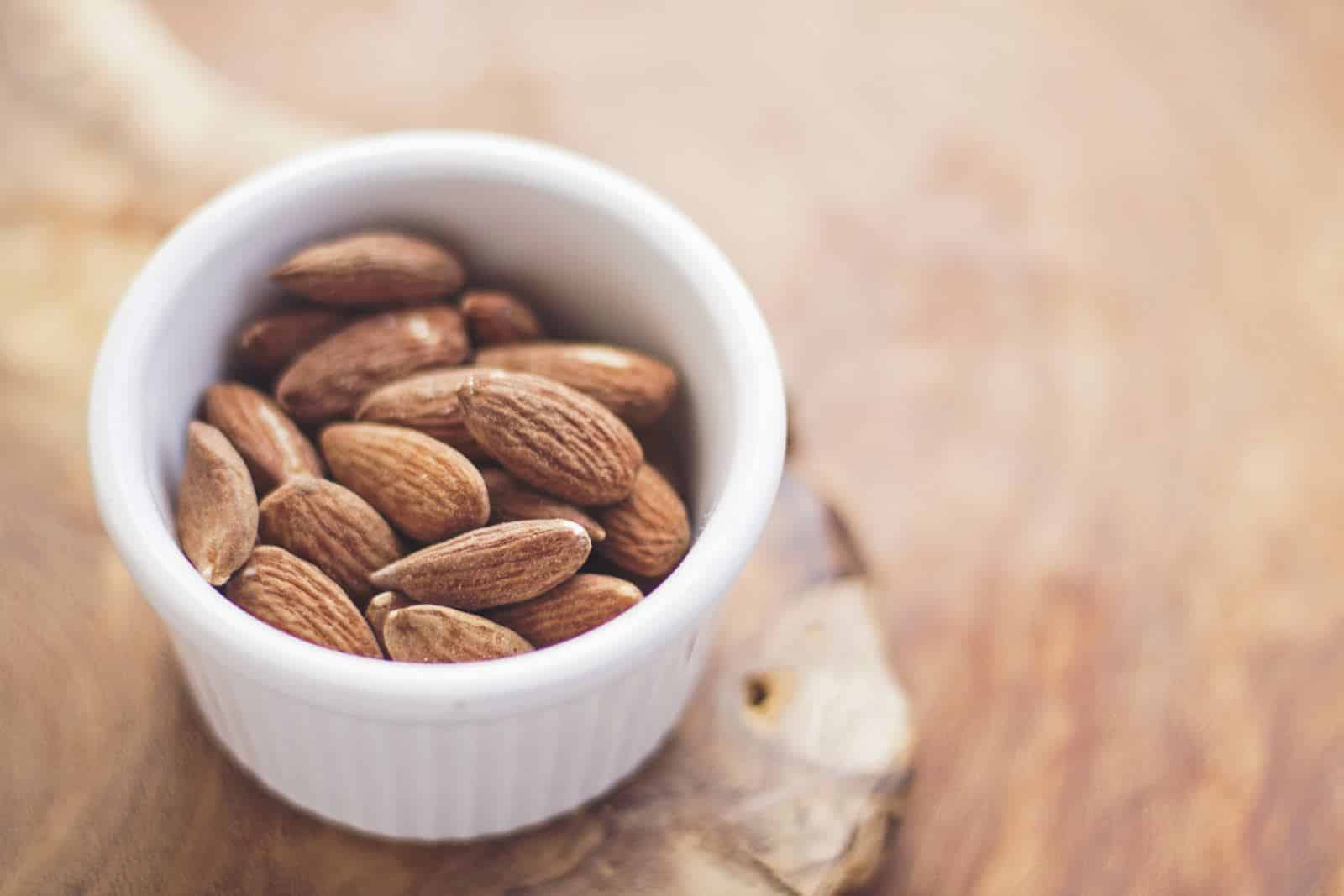Forget everything you thought you knew about fat.
Back in the 1970s, America declared a war on dietary fat. Like many wars, it’s a war we shouldn’t have started and a war that we lost. In fact, when researchers compare the timelines of the medical establishment’s anti-fat campaigns, troubling patterns emerge.[i]
First, the United States' obesity epidemic began at the exact same time that American families were told to buy only low-fat products and banish fat from their diet. Second, it caused a spike in sugary additives and high carbohydrate diets, which we now know is more responsible for weight gain than the previously vilified fat. Finally, in an effort to banish fat, people began using synthetic ingredients and substitutes like margarine, which can be toxic and has been linked to a spike in heart disease.
It’s time to reclaim the health benefits of fat. In this guide, we’ll explore the health benefits of three types of fat, plus XXX of the best plant-based foods to incorporate into your life to take advantage of these health perks.
How Much Fat Do You Need?
In general, you want 30% of your daily calories to come from fat.[ii][iii] In other words, if you're eating a standard 2,000-calorie diet, that means 600 calories should come from fat (which equals to 66 grams of fat per day).
The first is monounsaturated fat (MF). It lowers your overall cholesterol and raises your levels of HDL cholesterol, which is the so-called "good cholesterol."[iv]
The second is polyunsaturated fat (PF). It reduces your overall cholesterol, and helps lower your levels of so-called "bad" LDL cholesterol.[v]
Finally, there's saturated fat (SF). While it's been much-maligned in the press, saturated fat does play some key roles in your health and is not completely bad.[vi] This includes improving brain health, keeping your lungs healthy, strengthening your bones and keeping your immune system in top shape.[vii]
However, some health practitioners call saturated at neither “good” nor “bad,” but rather an “in-between fat.”[viii] That's because different studies have linked saturated fat with both positive and negative health benefits. As with anything, use saturated fats in moderation. The American Heart Association recommends no more than 13 grams of saturated fat a day.[ix]
What to Avoid
1. Trans Fats
A few years ago, the Food and Drug Administration (FDA) issued regulatory warnings about trans fats.[x] Trans fats became very popular in prepared foods starting in the 1990s,[xi] but the FDA now categorizes it as "no longer generally recognized as safe" and wants to see it eliminated from our diets. For example, trans fat consumption has been linked to an increased risk of heart attack.
You can find trans fats in many fried foods and packaged foods, including cookies and margarines. Most people consume the bulk of their trans fats in packaged foods. While there are naturally occurring trans fats, they are found in meat and dairy products, such as lamb and butter. By focusing on whole foods, plant-based meals, you eliminate your concerns about trans fats.
2. High Temperatures
When you cook, the hot temperatures change the food on a molecular level and in some cases can create a situation where the food raises your risks of cancer. In other words, cooking can turn some otherwise healthy foods into a carcinogenic.[xii] This includes plant-based fats found in cooking oils.[xiii]
Always cook your fats at the lowest temperature possible. This reduces health risks, and also preserves the most nutrients.
If you’re needing a plant-based oil to cook, like when you’re barbecuing vegetables or sautéing a stir fry, choose your vegetable oil according to its smoke point. This is the point at which it starts to smoke and become dangerous.
For high heats, such as roasting or broiling, go with a refined oil like refined olive or coconut oil.
At a medium heat, like baking under 300 degrees Fahrenheit, go with any of the above or even a less refined olive oil.
For low temperatures try nut or seed oil such as flax oil.
3. Omega Imbalances
Omega-3 fatty acids and omega-6 fatty acids are both forms of polyunsaturated fat, which we’ve discussed above. However, most people get far too many omega-6 fatty acids in their diet. This can lead to a wide range of diseases and health problems, including asthma![xiv]
In fact, the optimal ratio between omega-6 fatty acids (found in grains) and omega-3 fatty acids (found in seeds and nuts) is 2:1. However, most people eat a diet where the omega-6 to omega-3 fat ratio is 13:1.[xv] It’s thus important to eat more omega-3 fatty acids to help balance out this ratio. Benefits of eating more omega-3 fatty acids through seeds and nuts (specific foods that we’ll discuss below) are varied, including:[xvi][xvii]
Reduced inflammation
Improved moods
Lower levels of blood fat
Better brain health
Enhanced vision health
Lower risks of heart disease
Reduced risk of obesity and other symptoms of metabolic syndrome
Lower cancer risks
Stronger bones and joints
Top Healthy Sources of Plant-Based Fat
1. Oils
Each type of plant oil has different levels of the three core MF, PF and SF fats. Use a variety of oils in your cooking, salad dressings and sauces to keep your body in vibrant health. This ensures you get a wide variety of fat types.

In a tablespoon, olive oil has 10 grams of MFs, 1.2 grams of PFs and 1.8 grams of SFs. Very fined olive oil is better at higher temperatures. Less refined olive oil is better at medium temperatures.
Sunflower oil has 8.9 grams of PFs, 2.7 grams of MFs and 1.4 grams of SFs. High refined sunflower oil is okay at high temperatures.
Flaxseed oil has 10.2 grams of PFs, 2.5 grams of MFs and 1.3 grams of SFs. It, along with other seed oils, is better at low temperatures.
And finally, there's the popular coconut oil which does better at medium temperatures. It contains just 0.2 grams of PFs, 0.8 grams of MFs and an incredible 11.8 grams of SFs. It’s important to note that coconut oil is also a rich, natural source of medium-chain triglycerides (MCTs). MCTs have numerous well-researched benefits, such as helping you to get rid of belly fat,[xviii] increase your metabolism and the amount of energy you burn,[xix] soothe digestion problems,[xx] and potentially increase your exercise endurance.[xxi]
2. Avocados
Avocados come in many different shapes and sizes, so for the most accurate nutritional analysis, look at its fat content on a weight basis. In a cup of pureed avocado, you get a massive 33.7 grams of fat.[xxii]
You can also find avocado oil, which does exceptionally well at high temperatures thanks to its high smoke point.
3. Cacao Nibs
Farmers harvest cacao bean pods, ferment it, dry it, roast it and then crack it up and voila! You have cacao nibs.[xxv] They're crunchy and have an intense chocolate flavor that makes them perfect for healthy, plant-based desserts and smoothies and shakes.
Cacao nibs are also rich in fats. A 1-ounce serving of this decadent treat gives you 10 grams of fat.[xxvi] When you add them to a breakfast smoothie, you boost the flavor of your shake as well as improve its healthy fat ratio. Plus, the nibs are high in antioxidants that keep your nervous system healthy and reduce the risks of diseases like stroke.[xxvii]
4. Chia Seeds
In just one ounce of chia seeds, you’ll find nearly nine grams of vegan fat.[xxviii] Plus, you'll get the side benefits of more than 4 grams of protein and almost 11 grams of fiber.
And it turns out that the fats in chia seeds are exceptionally easy for your body to absorb. In a 10-week study published in the Journal of Alternative and Complementary Medicine, eating chia seeds had a measurable effect on the levels of omega-3 fatty acids in people's blood.[xxix] And while mass media and doctors often advise people to eat fish to get omega-3s, the humble chia seed might actually have the upper hand. A 2-tablespoon serving of chia seeds gets you as much omega-3 fatty acids as a big 4-ounce serving of salmon.[xxx]
5. Flax Seeds
You can either enjoy flax seeds whole or ground up into a nutty, gritty mixture. A tablespoon of either whole or ground flax gives you 3 grams of fat.[xxxi]
Researchers have specifically looked at how the alpha-linolenic acid (a type of fatty acid) in flax affects your health. They found that its effects include slowing the growth of tumors, reducing inflammation and even stopping cholesterol from building up in your blood vessels.[xxxii][xxxiii][xxxiv] It’s no wonder that a report in the Journal of Food Science and Technology called flax a “functional food,” meaning it combined nutritional value with medicinal power.
6. Nuts
Rounding out the protein list are nuts. They’re the perfect segue between our lists of top protein sources and our list of top healthy fat sources because nuts have both!
Black walnuts: 1 cup nets just over 30 grams of protein and nearly 74 grams of fat.[xxxv]

Sesame seeds: 1 cup offers 25.5 grams of protein and 71.5 grams of fat.[xxxvi]
Pistachios: 1 cup gives you a little more than 25 grams of protein and 54.7 grams of fat.[xxxvii]
Cashews: 1 cup nets you exactly 21 grams of protein and 63.5 grams of fat.[xxxviii]
Almonds: 1 cup gives you just over 20 grams of protein and 47 grams of fat.[xxxix]
Sunflower seeds: 1 cup provides 9.6 grams of protein and almost 24 grams of fat.[xl]
Besides the high dose of protein, the fats in nuts are exceptionally potent for your health. Multiple studies[xli][xlii] have found that nuts may work as an anti-inflammatory, in part due to their high levels of omega-3 fats, and can dramatically cut your heart disease risks.
Enjoy More Fat Today
Now that you’ve recognized the health benefits of fat, you can see how this much-maligned nutrient can contribute to your overall wellness. While many people think that eating fat makes you fat, this isn’t true. Instead, it’s fat replacements like sugar additives or margarine, as well as animal-based fats, that have been linked to increasing obesity and higher health problems.
Enjoy more plant-based fats to embrace everything that healthy fats can do in your life, while avoiding the health drawbacks that people have come to expect. You’ll raise your health vibrations, incorporate a wider range of food in your diet, and look and feel your best.
[i] https://www.healthline.com/nutrition/6-graphs-the-war-on-fat-was-a-mistake#section1
[ii] http://www.joslin.harvard.edu/info/diet_and_diabetes_a_personalized_approach.html
[iii] https://www.mayo.edu/healthy-lifestyle/nutrition-and-healthy-eating/expert-answers/fat-grams/faq-20058496
[iv] https://www.thespruce.com/all-about-fats-995463
[v] https://www.thespruce.com/all-about-fats-995463
[vi] https://www.healthline.com/nutrition/top-8-reasons-not-to-fear-saturated-fats
[vii] https://articles.mercola.com/sites/articles/archive/2009/09/22/7-reasons-to-eat-more-saturated-fat.aspx
[viii] https://www.health.harvard.edu/staying-healthy/the-truth-about-fats-bad-and-good
[ix] https://healthyforgood.heart.org/Eat-smart/Articles/Saturated-Fats
[x] https://www.fda.gov/ForConsumers/ConsumerUpdates/ucm372915.htm
[xi] https://healthyforgood.heart.org/eat-smart/articles/trans-fat
[xii] http://www.precisionnutrition.com/all-about-cooking-carcinogens
[xiii] https://www.urmc.rochester.edu/patients-families/health-matters/june-2015/cooking-oils-which-one-when-and-why.aspx
[xiv] https://www.ncbi.nlm.nih.gov/pubmed/12442909
[xv] https://www.uccs.edu/Documents/healthcircle/pnc/health-topics/Omega-3_6_and_9_Fats.pdf
[xvi] https://www.webmd.com/healthy-aging/omega-3-fatty-acids-fact-sheet#1
[xvii] https://www.healthline.com/nutrition/17-health-benefits-of-omega-3
[xviii] http://citeseerx.ist.psu.edu/viewdoc/download?doi=10.1.1.501.2468&rep=rep1&type=pdf
[xix] http://citeseerx.ist.psu.edu/viewdoc/download?doi=10.1.1.501.2468&rep=rep1&type=pdf
[xx] https://med.virginia.edu/ginutrition/wp-content/uploads/sites/199/2014/06/Parrish-February-17-2.pdf
[xxi] http://lpi.oregonstate.edu/diet-and-optimum-health/2017-abstracts/gillingham
[xxii] http://nutritiondata.self.com/facts/fruits-and-fruit-juices/1843/2
[xxiii] https://www.livescience.com/45209-avocado-nutrition-facts.html
[xxiv] https://www.healthline.com/health/16-health-facts-about-avocado#healthy-fats
[xxv] https://www.thespruce.com/cacao-nibs-overview-3371731
[xxvi] http://nutritiondata.self.com/facts/custom/933596/2
[xxvii] https://draxe.com/cacao-nibs/
[xxviii] http://nutritiondata.self.com/facts/nut-and-seed-products/3061/2
[xxix] https://www.ncbi.nlm.nih.gov/pubmed/22830971
[xxx] http://www.huffingtonpost.ca/entry/health-benefits-of-chia-seeds-eat-them_us_568d42f8e4b0c8beacf52647
[xxxi] http://nutritiondata.self.com/facts/nut-and-seed-products/3163/2
[xxxii] https://www.ncbi.nlm.nih.gov/pubmed/23585134
[xxxiii] https://www.ncbi.nlm.nih.gov/pubmed/21076723
[xxxiv] https://www.ncbi.nlm.nih.gov/pmc/articles/PMC4375225/
[xxxv] http://nutritiondata.self.com/facts/nut-and-seed-products/3137/2
[xxxvi] http://nutritiondata.self.com/facts/nut-and-seed-products/3070/2
[xxxvii] http://nutritiondata.self.com/facts/nut-and-seed-products/3135/2
[xxxviii] http://nutritiondata.self.com/facts/nut-and-seed-products/3093/2
[xxxix] http://nutritiondata.self.com/facts/nut-and-seed-products/3085/2
[xl] http://nutritiondata.self.com/facts/nut-and-seed-products/3076/2
[xli] http://whfoods.com/genpage.php?tname=btnews&dbid=101
[xlii] http://www.whfoods.com/genpage.php?tname=btnews&dbid=37
